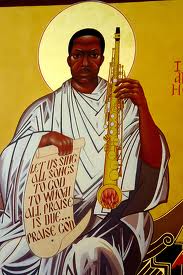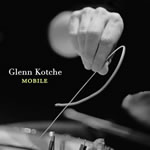 One of the most awkward dates of my life ended when I played Joy Division’s Unknown Pleasures for someone whose favorite singer was Billy Joel. Since then, that album has killed more romantic moods than any of my other favorites. Martin Hannett’s creepy production evokes Phil Spector’s wall of sound as if rendered by Spector the convicted murderer. Lead singer Ian Curtis’ relentless sadness was arguably more intense than any of his punk contemporaries’ anger.
One of the most awkward dates of my life ended when I played Joy Division’s Unknown Pleasures for someone whose favorite singer was Billy Joel. Since then, that album has killed more romantic moods than any of my other favorites. Martin Hannett’s creepy production evokes Phil Spector’s wall of sound as if rendered by Spector the convicted murderer. Lead singer Ian Curtis’ relentless sadness was arguably more intense than any of his punk contemporaries’ anger.
Joy Division remains the foundation of Manchester’s Factory Records sound, featured in the fascinating movie 24-Hour Party People and a more serious biopic, Control. Overcome by epilepsy and a bizarre love triangle, Curtis committed suicide just before the band’s planned world tour. The surviving members formed New Order, an equally influential band that was hardly chipper by any normal standard (“Love Vigilantes,” for example, basically retells the Top Forty war weeper “Billy, Don’t Be a Hero” from the perspective of the dead guy). But compared to Joy Division’s intensity, New Order might as well have been Kajagoogoo or Wang Chung.
Earlier this month, I got my first chance to see Unknown Pleasures performed live, in a Los Angeles show featuring Joy Division and New Order’s former bassist and backup singer, Peter Hook, and his new band, the Light. I could quibble about the Light’s performance. Hook’s vocals were decent, but sometimes sounded like he was leading cheers for Manchester United. Guest singer Moby looked enthusiastic, but came off a bit like last century’s lightbulb. Still, the band was good enough to revive the majesty of these songs (and make me feel as if that bad date had never ended).
To perk myself up after the show, I scarfed too many shots of espresso and jotted down a few mildly happy thoughts about the Joy Division revival:
1. Their Disease is Still Better than the Cure
It’s easy to smirk at Joy Division for inspiring future mopeheads to whine into their microphones. Interpol and scores of other less catchy Joy Division-inspired bands have certainly overdone the emoting. But Joy Division also deserves better than to be known only as the emirs of emo and designer doom. As Robert Christgau has noted, Joy Division struggled against depression, rather than wearing it like a designer suit. Joy Division has inspired legions of misfits–among them Bono, Kurt Cobain, Thom Yorke, Morrisey, and even Robert Smith–to reach great, if sometimes grandiose heights. And the band’s taut riffs, fusing punk velocity to Can’s minimalism, sometimes have a life of their own.
Joy Division, “She’s Lost Control”
2. The Muppets Never Covered Any Joy Division Songs
Okay, go ahead and snicker. But a 2009 piece on the Topless Robot blog, The 7 Most Depressing Songs Ever Sung By a Muppet, refers to Kermit and Rowlf’s duet on “I Hope That Something Better Comes Along” as “pretty much the pre-schooler equivalent of Joy Division’s ‘Love Will Tear Us Apart’.” And here’s the really depressing thing: this song only rates as Number Six on the list of the most depressing Muppet songs. The winner is a Fraggle funeral dirge, which we won’t post here because we care about our readers.
Muppets, “I Hope That Something Better Comes Along”
3. They Didn’t Write the Most Depressing Song of All Time
Many have cited Joy Division’s final single, “Love Will Tear Us Apart,” as the most depressing song ever. It’s a remarkable song, whose first passage captures in a few bars the end of one era and the beginning of another. But I can’t rate it the gloomiest. The music has too much energy. I keep thinking of it as half of a medley with “Love Will Keep Us Together,” and wondering how Toni Tenille would sing it. There are stacks of of George Jones, Leonard Cohen, Son House and Tom Waits songs I consider more depressing, but lists like this have to get personal. My selections follow in the next post.
Joy Division, “Love Will Tear Us Apart”
Neil Sedaka, “Love Will Keep Us Together”










